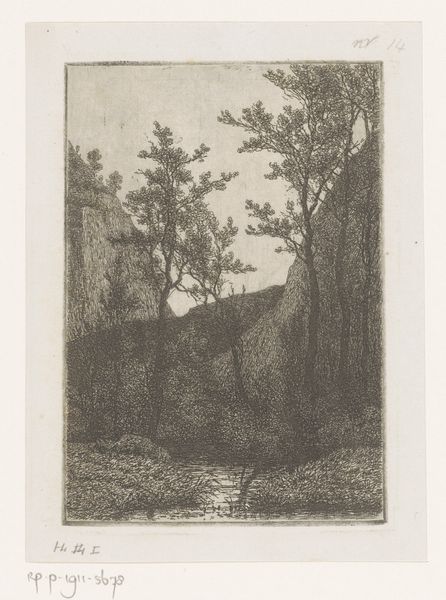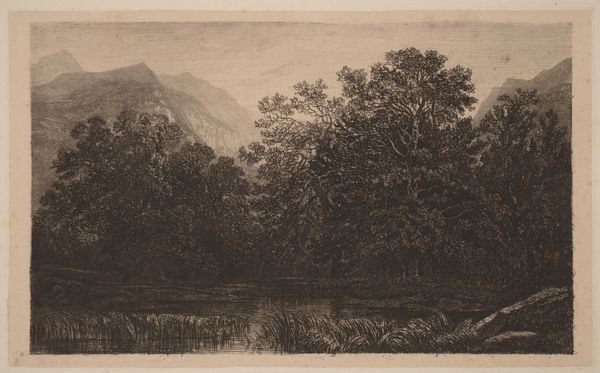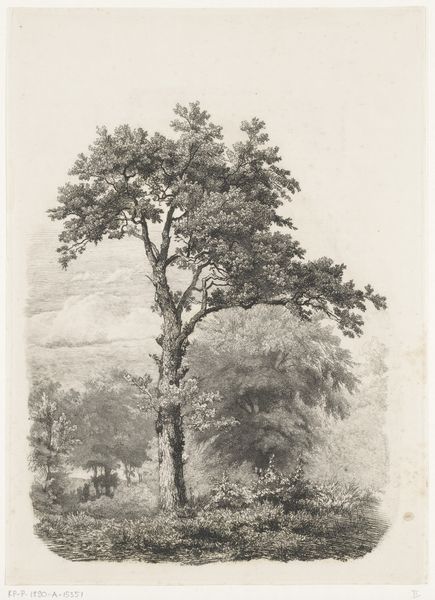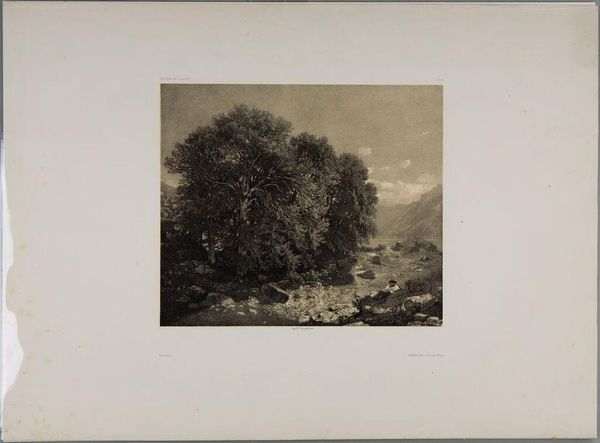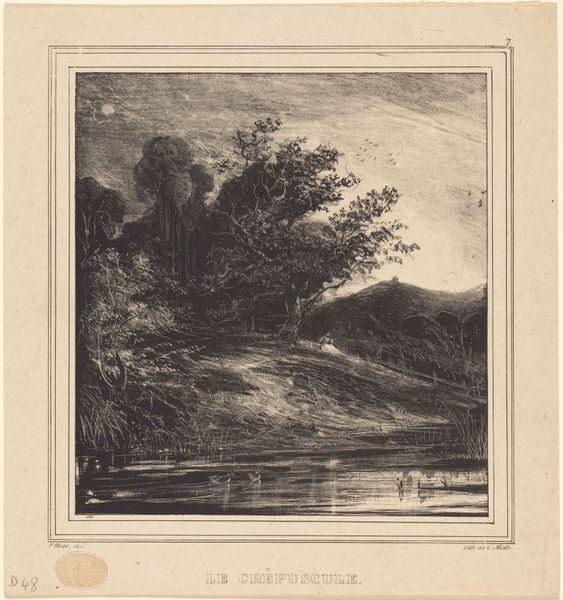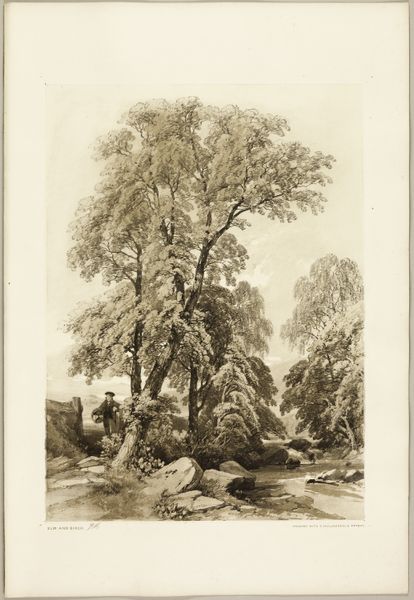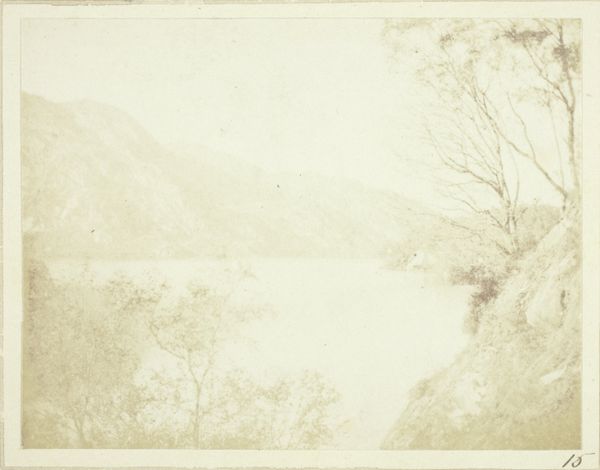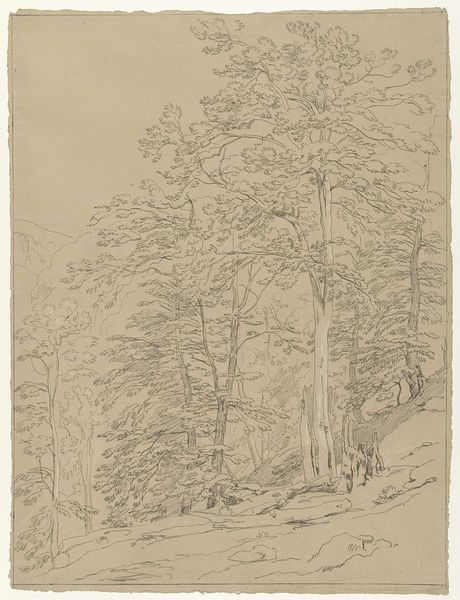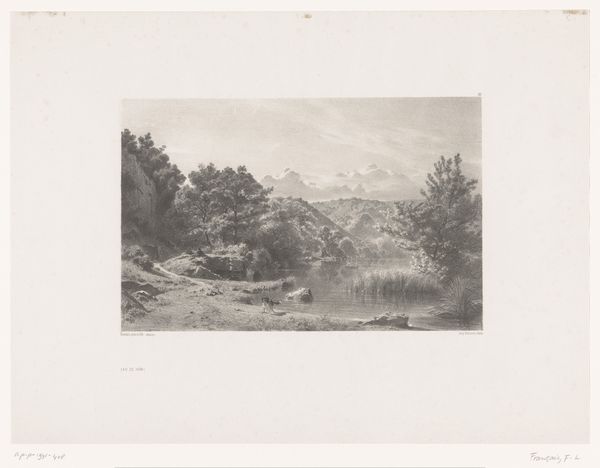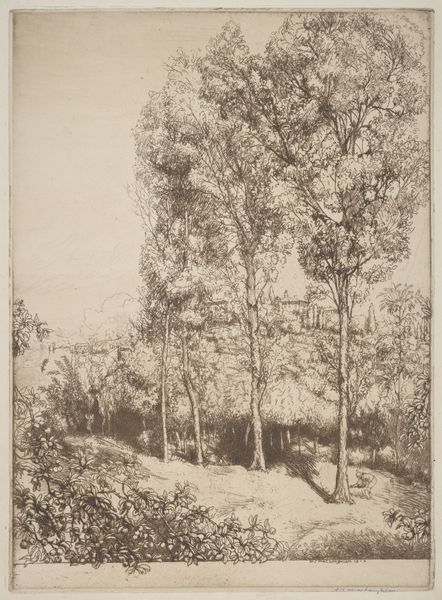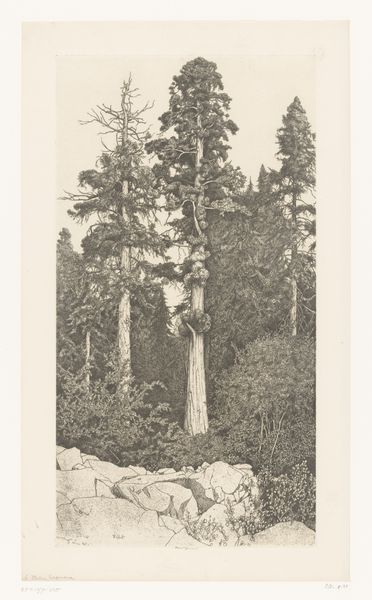
print, etching, engraving
# print
#
etching
#
landscape
#
engraving
#
realism
Dimensions: plate: 21.59 x 12.22 cm (8 1/2 x 4 13/16 in.) sheet: 29.21 x 15.88 cm (11 1/2 x 6 1/4 in.)
Copyright: National Gallery of Art: CC0 1.0
Editor: This etching is titled "Road to the Pasture, Somewhere in Maine" and was created around 1920 by John Taylor Arms. The intricate detail achieved with engraving is fascinating, yet the scene evokes a strong sense of tranquility and the quiet solitude of the countryside. What resonates with you when you view it? Curator: It evokes for me a connection to the deeper archetypes of landscape. The solitary tree, the path winding into the distance, even the looming mountain—they all resonate as powerful symbols. Consider how the tree, especially, often embodies rootedness, strength, and the cyclical nature of life in countless cultures. Editor: That’s interesting. I mostly saw a beautiful depiction of nature. You are right, though, the tree dominates, doesn’t it? Curator: Precisely. And its prominence invites contemplation. Does it perhaps represent resilience in the face of nature's forces, considering its isolated position? What feeling do you get from the placement of the mountain in relation to the path? Editor: It’s almost like a destination, or maybe a challenge? Curator: Exactly! This pathway, this road—isn't it representative of journeys, both physical and spiritual? It's not simply a road, but perhaps a metaphorical passage into the unknown, or toward enlightenment. Editor: I never would have considered that. Seeing it as more than just a landscape changes everything. Curator: The enduring power of images, isn’t it? Visual cues, absorbed through time, evoke memory and experience—it’s cultural memory at play within us. Editor: Thank you! I learned so much just now by looking closely. Curator: It was my pleasure. Remember, the landscape is not just scenery, but a repository of shared human experience.
Comments
No comments
Be the first to comment and join the conversation on the ultimate creative platform.
